Nestled in Pasadena, California, amidst the vibrant tapestry of Southern California, lies the California Institute of Technology (Caltech), a beacon of scientific and technological innovation. Renowned for its rigorous academic programs, groundbreaking research, and transformative discoveries, Caltech has established itself as a preeminent institution of higher learning, consistently ranking among the top universities in the world.
Caltech is small but prizes excellence and ambition. The contributions of Caltech’s faculty and alumni have earned national and international recognition, including 46 Nobel Prizes. The Institute manages the Jet Propulsion Laboratory (JPL) for NASA, sending probes to explore the planets of our solar system and quantify changes on our home planet; owns and operates large-scale research facilities such as the Seismological Laboratory and a global network of astronomical observatories, including the Palomar and W. M. Keck Observatories; and cofounded and co-manages LIGO, which, in 2016, observed gravitational waves for the first time.
The Caltech campus, spanning 124 acres, exudes a unique blend of academic rigor and creative spirit. Its architecture seamlessly intertwines historical landmarks with modern structures, reflecting the university’s rich legacy and unwavering commitment to progress.
Across the campus, a vibrant intellectual community thrives, fueled by the shared passion for scientific exploration and technological advancement. Students and faculty alike engage in lively discussions, collaborate on groundbreaking research projects, and challenge the boundaries of knowledge. The atmosphere pulsates with a sense of intellectual curiosity and a relentless drive to unravel the mysteries of the universe.
Caltech’s campus is not merely a physical space; it is an ecosystem of innovation and discovery. The serene gardens, adorned with lush greenery and tranquil fountains, provide a sanctuary for reflection and contemplation. The Beckman Auditorium, a grand architectural masterpiece, hosts captivating lectures that inspire and ignite imaginations. The Caltech Athenaeum, a hub for student life, fosters a sense of camaraderie and belonging among the university’s brightest minds.
Beyond its academic prowess and research achievements, Caltech’s campus embodies a spirit of creativity and artistic expression. The Caltech Chamber Music Society brings harmonious melodies to the campus, providing a respite from the rigors of academic life.
Student Cohort Size
Caltech’s student population comprises approximately 2463 students. Undergraduate students make up 1023 of the total enrollment, while graduate students represent the remaining 1440. The gender distribution is quite balanced, with 42% identifying as female and 58% identifying as male. These students come from diverse backgrounds, hailing from 39 states, the District of Columbia, Guam, 31 countries, and six continents. Despite their varied interests across fields of study, activities, and experiences, they share a common passion for science, technology, engineering, and mathematics (STEM), bringing a wealth of perspectives and experiences to the Caltech community.
Four-Year Completion Rate
The graduation rate is among the most important factors when selecting a college. The California Institute of Technology’s first-year retention rate is 94%. This means that 94% of first-year students continue their education for their sophomore year and beyond. The 4-year graduation rate is 79%. This implies that 79% of students were able to graduate after 4 years. The 6-year graduation rate is 89%. This implies that 89% of students were able to graduate after 6 years.
Student-to-Faculty Ratio
Caltech maintains an exceptional 3:1 student-faculty ratio, fostering a close-knit academic environment that nurtures individual growth and intellectual curiosity. This low student-to-faculty ratio ensures ample opportunities for personalized attention, allowing students to engage in meaningful discussions, receive tailored feedback, and collaborate closely with professors on research projects. This personalized approach to education empowers students to delve deeper into their areas of interest, develop their critical thinking skills, and prepare for success in their chosen STEM fields. First-Year Applicants – Undergraduate Admissions (caltech.edu)
Acceptance Rate
California Institute of Technology (Caltech) remains one of the most selective universities in the United States with an acceptance rate of just 2.03% for the Class of 2027. Of the 13,136 applicants, only 267 were admitted, showcasing the university’s rigorous admissions standards and its commitment to attracting and enrolling the brightest minds from around the world.
The admitted students represent a diverse group both in terms of gender and geographical background. Forty-one percent of the class identifies as female, while 59% identify as male. Geographically, the students come from all corners of the nation, with California residents forming the largest contingent at 28%. Other notable regional breakdowns include the Mid-Atlantic (13%), Midwest (10%), New England (3%), South (10%), Southwest (8%), and West (9%). Additionally, 18% of the incoming class hails from international locations, further enriching the campus community with diverse perspectives and experiences.
Beyond academic excellence, Caltech seeks students with a passion for science, technology, engineering, and mathematics (STEM) fields. One-fifth of the admitted students are scholar-athletes who will have the opportunity to compete on one or more of the Institute’s Division III varsity athletic teams, demonstrating Caltech’s commitment to fostering a well-rounded educational experience.
Types of Admission
The California Institute of Technology applicants can apply through the Restrictive Early Action, or Regular Decision programs. Restrictive Early Action (REA) is a non-binding early admissions process for students who are confident that Caltech is their first-choice university.
Students will not be required to accept a Caltech REA offer and may compare financial aid options if they choose to apply to other institutions during the Regular Decision process. Applications are due in November and students will be notified of their admissions decision (admit, defer, or deny) by mid-December. Admitted students will then have until May 1, to decide if they will accept Caltech’s offer of admission.
Students who choose to apply REA to Caltech may not apply Early Action nor Early Decision to any other institution, with the following exceptions:
- An institution outside of the United States;
- Any public institution that has a non-binding admissions policy with a fall application deadline such as the University of California system;
- An institution’s non-binding rolling admissions process;
- Any military academy;
- Any scholarships or special academic programs with an early deadline at another institution, public or private, if the early application submission is a necessary aspect for consideration, and the outcome is non-binding;
- If you are deferred admission after applying REA to Caltech, you may apply to another institution’s Early Decision II program. If you are admitted to that institution’s Early Decision II program, you are required to withdraw your application for admission to Caltech.
Regular Decision is also a non-binding and unrestrictive admission plan that allows students more time to complete the application and to have grades from the first term of their senior year considered in the review.
Application Components
All required parts of the Common Application
$75 application fee or fee waiver.
School Report: This is a document that your high school college counselor will send to Caltech that provides context about your school. You can request your counselor complete it through either application platform. Additionally, your counselor will submit a letter of recommendation on your behalf.
Teacher evaluations: Caltech requires letters of evaluation from two secondary school teachers. One from a math or science teacher and one from a humanities or social science teacher.
Official transcripts from your secondary school (grades 9-11, or the international curriculum equivalent). If you have taken college classes while in high school, please provide the college transcript, as well. Transcripts must be submitted by a school official.
Mid-Year Report (due when first term senior grades are available at your school).
Two academic teacher letters of recommendation: Recommendations must be from core academic teachers who worked with a student in 10th, 11th, or 12th grade.
Standardized Test Scores: While test scores are optional for students applying for fall 2023 and fall 2024, the average SAT scores for admitted students were between 1530 and 1580, and the average ACT scores were between 35 and 36.
Required Short Answer Questions
- At Caltech, we investigate some of the most challenging, fundamental problems in science, technology, engineering, and mathematics. Identify and describe two STEM-related experiences from your high school years, either in or out of the classroom, and tell us how and why they activated your curiosity. What about them made you want to learn more and explore further? (Min: 100/Max: 200 words for each experience)
- The creativity, inventiveness, and innovation of Caltech’s students, faculty, and researchers have won Nobel Prizes and put rovers on Mars. But Teachers also imagine smaller-scale innovations every day, from new ways to design solar cells to how to 3D print dorm decor. How have you been a creator, inventor, or innovator in your own life? (Min: 200 / Max: 250)
- Caltech’s mission – to cultivate learning, discovery, and innovation for the benefit of humanity – relies on its community members embracing fundamental Caltech values:
- Openness and enthusiasm for having preconceptions challenged
- Respect and appreciation for the idea that, while we are all members of the same community, the opportunities we’ve had to develop, showcase, and apply our talents have not been equal
- Passion for the ideal that science can and should meaningfully improve the lives of others
Share what one or more of these values evokes for you. (Min: 200 / Max: 400)
Optional Short Answer Questions
We know, we know … you see optional and start to wonder if we mean it. But in this section, we truly do! See these as completely optional opportunities to show us more of your personality.
Optional:
- If there are aspects of your life or social or personal identity that you feel are not captured elsewhere in this application, please tell us about them below. (Max: 150 words)
- When not surveying the stars, peering through microscopes, or running through marathons of coding, Caltech students pursue an eclectic array of interests that range from speed-cubing to participating in varsity athletics to reading romance novels. What is a favorite interest or hobby, and why does it bring you joy? (Max: 100 words)
- Did you have a hard time narrowing it down to just one interest or hobby? We understand – Caltech students like to stay busy, too – tell us about another hobby or interest! (Max: 50 words)
Optional Academic Short Answer Questions
OPTIONAL: Have you had any extenuating circumstances (such as limited course selection or disruptions), that have affected your coursework, but that are not described elsewhere in your application? If so, tell us about them here.
Some Caltech applicants engage in STEM competitions locally, nationally, or internationally (eg., AIME, Science Olympiad, International Science Olympiads). If you have received any STEM honors or awards, list them here (with scores, if applicable).
Academics
Caltech is a research university dedicated to tackling the most fundamental and challenging problems in science and technology. Students at Caltech are actively involved in this groundbreaking work. The UC Berkeley fosters a small, collaborative community driven by a passion for STEM fields. Caltech believes in experiential learning, treating undergraduates as scientists from the very beginning. While the coursework is demanding and will push students outside their comfort zones, working with classmates to find answers is encouraged. Caltech emphasizes critical thinking at every step, preparing students to become exceptional scientists.
Caltech’s education goes beyond excellent STEM classes. The humanities and social sciences are considered essential components of the core curriculum. These subjects allow students to see beyond the immediate problem and think critically about the context and broader impact of their work. Regardless of whether students pursue STEM fields or not, they develop rigorous thinking and communication skills. Caltech’s faculty is committed to teaching undergraduates. Students not only learn from faculty in the classroom but also have the opportunity to work alongside them as fellow researchers. It’s an education that tests students’ resolve while fostering close collaboration, mutual respect, interdisciplinary teamwork, critical thinking, problem-solving, and continuous learning.
Most Popular Majors:
Computer Science
Mechanical Engineering
Physics
Mathematics
Electrical Engineering
Bioengineering and Biomedical Engineering
Chemical Engineering
Biology
Chemistry
Computational and Applied Mathematics
Cost of Attendance
On-Campus
| Category | On-Campus | Off-Campus | With Parents |
|---|---|---|---|
| Tuition | $63,402 | $63,402 | $63,402 |
| Fees1,2 | 2,496 | 2,496 | 2,496 |
| Housing/Room | 11,697 | 14,733 | See Living Expenses |
| Food/Meals | 8,586 | 7,353 | See Living Expenses |
| Books, Course Materials, Supplies and Equipment (est.)3 | 1,428 | 1,428 | 1,428 |
| Living Expenses | N/A | N/A | 11,493 |
| Personal Expenses (est.) | 3,213 | 4,968 | 4,059 |
| Total Estimated Cost of Attendance4 | $90,822 | $94,380 | $82,878 |
To conclude, the California Institute of Technology (Caltech) is a living testament to the university’s unwavering commitment to excellence, innovation, and creativity. It is a place where groundbreaking research is conducted, where brilliant minds converge, and where the boundaries of knowledge are relentlessly pushed forward. As students immerse themselves in this dynamic environment, they embark on a transformative journey of intellectual growth, personal discovery, and preparation for a future filled with boundless possibilities.
Embark on a transformative higher education journey and elevate your path to academic success with the expert guidance and personalized support of an Ivy Central college counselor.






